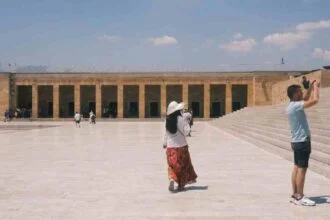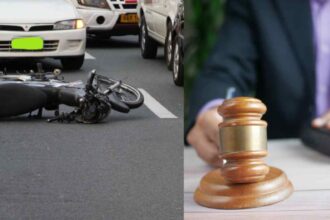Six Cultural Festivals of Bhutan that you should never miss
Bhutan is famous for several reasons and one of them is indeed its vibrant festivals. There are different types of festivals which are celebrated in different parts of this beautiful country.
The world we live in consists of an extremely diverse and heterogeneous human population. As the human civilization progressed and evolved, the diversity increased manifold. This melange of cultural diversity has left us with a plethora of cultural festivals.
Festivals are also a big family and social occasion. People dress up in their finest clothes and the most resplendent jewelry of coral and turquoise. They pack picnic lunches in their traditional bamboo baskets and stay all day at the festivals which are usually held in the dzongs (fortresses) or at monasteries.
Festivals can support local communities by bringing in unique visitors who will inject new revenue into the economy. This inflow of tourists will definitely benefit the host community and country.
Also Read: Travel Scams: How To Avoid These Tourist Traps – Nomad Lawyer
Festivals of Bhutan
1. BLACK NECKED CRANE FESTIVAL:
To the villagers, the annual arrival of black-neck cranes is an event that holds great significance. As well as heralding the beginning of winter, some believe these endangered birds to be the reincarnation of two deities who are said to be protectors of this beautiful valley. When both arriving and leaving, these graceful birds will circle the Gangtey Gompa three times.
To the locals, this represents the honoring of the three sacred jewels of Buddhism and the request and gratitude for their protection and care during their stay. The Black-necked Crane Festival is held every year in Phobjikha on November 11th, coinciding with the birth anniversary celebrations of His Majesty the King. Organized by Royal Society for Protection of Nature (RSPN) and the Phobjikha Environment Management Committee (PEMC), the festival started in 1998 and aims at spreading awareness on the cranes and the traditions as well as cultural of local people.
2. DOCHULA FESTIVAL:
Dochula Festival or Tshechu, Druk Wangyel Tshechu, is commissioned by the Queen Mother Ashi Dorji Wangmo Wangchuck in 2011. This is a unique festival as the festival is fully performed by the Royal Bhutan Army rather than the monastery. The soldiers have been given three months training in folk and mask dance.The festival will start at 0900 and ends at 1615.
3. THIMPHU TSHECHU
The “fortress of the glorious religion” was initially constructed in 1641 and restored by the Third King Jigme Dorji Wangchuck in the 1960s. Tashichhodzong houses some ministries, His Majesty’s secretariat, and the central monk body.
The Thimphu Tshechu, as all Tshechu festivals, honors Padma Sambhawa, also known as Guru Rimpoche, the precious yogi and saint who is credited with having introduced Tantric Buddhism throughout the Himalayas. The festival & masked dances are performed by monks clad in colorful brocade attire and permeated by chants and reading of Buddhist scripts. The culmination of festival constitutes the unfolding of a huge cloth thangka, a sacred scroll, depicting Padma Sambhawa and imagery from Buddhist pantheon.
4. PARO TSHECHU:
Paro Tshechu is one of the most famous festivals in Bhutan. Throngs of people, travel from around the world and neighboring districts to participate in the festivity. On the last day of the celebration, a gigantic Thangkha (Thongdrel) of Guru Rinpoche will be displayed inside the Dzong. The Thongdrel will be displayed early in the morning and for a few hours only. It is believed that one can cleanse their own sins upon viewing the Thongdrel.
5. PUNAKHA DROMCHOE:
Punakha Dromche festival is unique for being the only festival with a procession that re-enact the war against Tibetan in the 17th century.
Dromche generally include dances and this festival is dedicated to Yeshe Gompo (Mahakala) or Palden Lhamo, the two main protective deities of Drukpas (Drukpas = means people of Druk land or Bhutanese). Punakha Dromche take place in the first month of the lunar year and ends with ’Serda’, a magnificent procession that re-enacts an episode of the war against the Tibetan in the 17th century.
The religious dances performed during festival are called ’Cham’ and there are a large number of them. Dancers wear spectacular costumes made of yellow silk or rich brocade, often decorated with ornaments of carved bone. For certain dances, they wear masks which may represent animals, fearsome deities, skulls.
or just simple human beings. These dances can be grouped in three categories; (I) Instructive or Didactic Dances, (II) Dances that purify and protect a place from demonic spirits, (III) Dances that proclaim the victory of Buddhism.
6. Punakha Tshechu
All Tshechu festivals, honor Padmasambhava, also known as Guru Rimpoche, the precious yogi and saint who is credited with having introduced Tantric Buddhism throughout the Himalayas. The festival’s masked dances are performed by monks clad in colorful brocade attire and permeated by chants and reading of Buddhist scripts. The culmination of the festival constitutes the unfolding of a huge cloth thangka, a sacred scroll, depicting Padmasmabhawa an imaginary figure from the Buddhist pantheon.
To conclude, a visit to Bhutan during a festival can provide a meaningful opportunity to see the faces behind the masks and spend time speaking to the monks about the origin and meaning of the festival.





